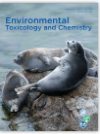Zinc Toxicity to Daphnia magna in a Two‐Species Microcosm Can Be Predicted From Single‐Species Test Data: The Effects of Phosphorus Supply and pH

Scientific abstract
Ecological interactions and abiotic stress factors may significantly affect species sensitivities to toxicants and these are not incorporated in standard single species tests. This study tests the hypothesis if a model, calibrated solely on single species data, can explain abiotic stress factors in a two‐species microcosm, a test applied to the effects of nutritional stress (phosphorus (P)‐limitation) on zinc (Zn) toxicity to Daphnia magna. A population model was developed based on P‐ and Zn‐dependent algal and daphnid growth. Two separate two‐species (phytoplankton Pseudokirchneriella subcapitata and consumer D. magna) microcosm experiments with P × Zn factorial combinations and a different pH (7.3 and 7.8) were set up to validate the model. The 21‐day daphnid population size was considerably reduced by increased Zn and by decreased P supply with a significant (p < 0.001) interaction among both factors. The observed median effective concentration (EC50) of Zn on D. magna population size varied 12‐fold (25 to 310 µg Zn L−1), with the lowest EC50's found at the highest pH and high P treatments. For both experiments, Zn toxicity to D. magna was correctly predicted within a factor of two for EC50‐values and are explained by the model through: (1) a higher phytoplankton Zn sensitivity at higher pH, affecting food supply to D. magna and (2) an increased algal P‐content at higher Zn, offering a nutritional benefit to daphnids that counteracts direct Zn toxicity under P‐limitation. This study illustrated that indirect effects of Zn via producer‐consumer relationships can outweigh the direct toxic effects, and that models calibrated solely on single species test data can help with interpreting these results in two‐species systems.
Full reference (link):
Fettweis A., De Schamphelaere K.A.C., Smolders E. (2018), Zinc Toxicity to Daphnia magna in a Two‐Species Microcosm Can Be Predicted From Single‐Species Test Data: The Effects of Phosphorus Supply and pH. Environ Toxicol Chem. Accepted Manuscript.
